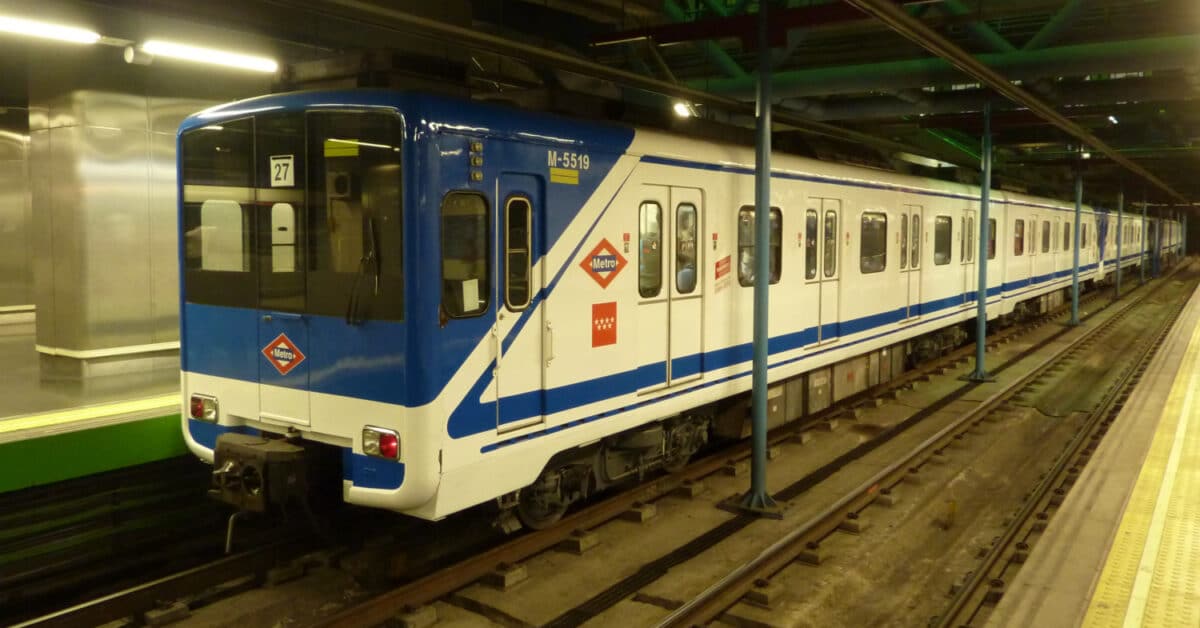Next December, the service on line 6 of the Madrid metro will return to normal. When the first phase of the modernisation and improvement works, which will allow complete automation, are completed, the line will be back in operation.
However, Metro could face a major operational problem: the lack of trains to reinforce the service.
Until May, the line’s fleet consisted of 30 trains of the 8400-2nd series dual voltage (600 V/1500 V) and 4 compositions of the 5000-4th series single voltage 600 V, which were used as a complement.
These reinforcements were common and are necessary when 8000 series trains are missing due to breakdowns and other maintenance work or peak demand. However, with the change of catenary voltage to 1500 V, the 5000 series can no longer return to line 6.
Their absence could lead to further saturation of an already overcrowded line, which 10 years ago had 21 additional trains of the 5000-2nd series (shared with line 9) that were abruptly withdrawn from service, without having been replaced so far.
Although the Community of Madrid assured that they were going to be decommissioned to return them to service, they are currently being scrapped.
The peculiarities of Madrid Metro Line 6
To replace these 5000 series trains, Metro would need to take 6-car trains compatible with 1500 V catenary voltage from other lines. Given that the 5000-4th can only be used on line 9, the only wide gauge line that maintains 600 V, this line could transfer dual voltage rolling stock to line 6.
These would be trains of the 7400, 9400 series and double trainsets of 8400-1st. On other lines, single-voltage 7000 and 9000 trains could be used, as well as double trainsets of 8000-1st and 9700, although this would require a reduction in service on these lines.
However, Ansaldobreda trains (7000 and 9000/9700) are banned from running on line 6 after the Moncloa derailment in 2009.
In addition, line 6 is equipped with Alstom’s CBTC Cityflo 650 system, which in broad loading gauge was only installed on the 5000-2nd, 5000-4th and 8400-2nd trains.
This situation of lack of material is temporary until the new trains arrive, which are planned for the end of 2026 and which will be able to run without a driver when the platform doors are installed and the CBTC is updated. It is therefore not feasible to install this system on other trains for such a short period of time.
Therefore, the change in voltage has meant that the most used line of the Madrid metro has been left without trains to reinforce the service.
According to unofficial sources, in order to prevent the withdrawal of trains, during the interruption of the line for works, long-cycle maintenance is being carried out. These are the ones that keep trains out of service for the longest time.
Metro has not commented on this matter. Despite enquiries about which trains will be used as reinforcements, the only response received is that Metro calculates the train tables according to the expected demand for each of the periods of the year. Trains will be reinforced according to the needs of the service and the availability of trains.
